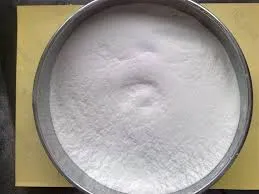
Nov . 03, 2024 11:15 Back to list
hec hydroxyethyl cellulose
Hydroxyethyl Cellulose (HEC) A Versatile Polymer for Multiple Applications
Hydroxyethyl cellulose (HEC) is a non-ionic, water-soluble polymer derived from cellulose, a natural biopolymer sourced from plant cell walls. As one of the most widely used cellulose derivatives, HEC has garnered attention across various industries due to its unique rheological properties, biocompatibility, and versatility.
HEC is primarily synthesized through the reaction of alkali-treated cellulose with ethylene oxide. This process leads to the introduction of hydroxyethyl groups onto the cellulose backbone, enhancing its solubility in water and providing various functional attributes. The degree of substitution—the number of hydroxyl groups replaced by hydroxyethyl groups—can be controlled, which allows customization of the polymer for specific applications.
Hydroxyethyl Cellulose (HEC) A Versatile Polymer for Multiple Applications
In the personal care industry, HEC serves as a key ingredient in numerous cosmetic and skincare formulations. Its ability to provide a smooth and consistent texture makes it an ideal choice for creams, lotions, and gels. Moreover, HEC acts as a stabilizer, helping to maintain the emulsion of oil and water in cosmetic products. Its non-irritating nature further establishes HEC as a suitable component for sensitive formulations.
hec hydroxyethyl cellulose

The pharmaceutical sector also benefits from the properties of HEC. It is utilized as a thickening agent and can help improve the stability and delivery of active ingredients in oral and topical medications. HEC can be used in drug formulations to control the release of medication, enhancing bioavailability and therapeutic efficacy. Additionally, due to its biocompatibility, HEC is increasingly being explored as a medium for drug delivery systems and wound dressings.
In the food industry, HEC serves as a food thickener and stabilizer. Its ability to enhance mouthfeel and improve the texture of food products ensures its place in various formulations, including dressings, sauces, and dairy products.
Despite its widespread use, the growing demand for sustainable and biodegradable materials challenges industries to adopt more eco-friendly alternatives. Ongoing research is focusing on bio-based sources and innovative modifications to enhance HEC’s properties while minimizing environmental impact.
In conclusion, hydroxyethyl cellulose stands out as a multifunctional polymer with diverse applications spanning construction, personal care, pharmaceuticals, and food. Its unique properties and adaptability continue to drive innovation, making it a valuable component in many formulations while addressing the increasing focus on sustainability in material science. As industries evolve, HEC is poised to remain a key player in the development of advanced products designed for performance and environmental responsibility.
-
Versatile Hpmc Uses in Different Industries
NewsJun.19,2025
-
Redispersible Powder's Role in Enhancing Durability of Construction Products
NewsJun.19,2025
-
Hydroxyethyl Cellulose Applications Driving Green Industrial Processes
NewsJun.19,2025
-
Exploring Different Redispersible Polymer Powder
NewsJun.19,2025
-
Choosing the Right Mortar Bonding Agent
NewsJun.19,2025
-
Applications and Significance of China Hpmc in Modern Industries
NewsJun.19,2025







